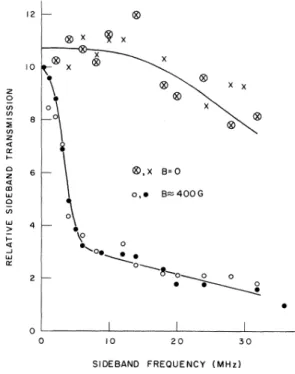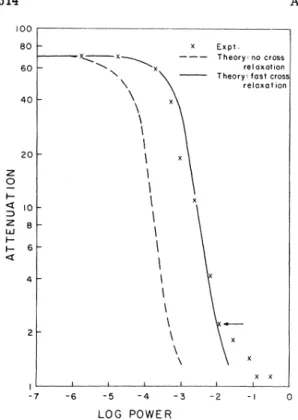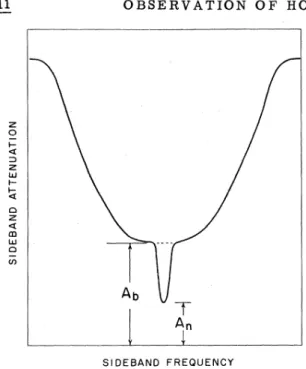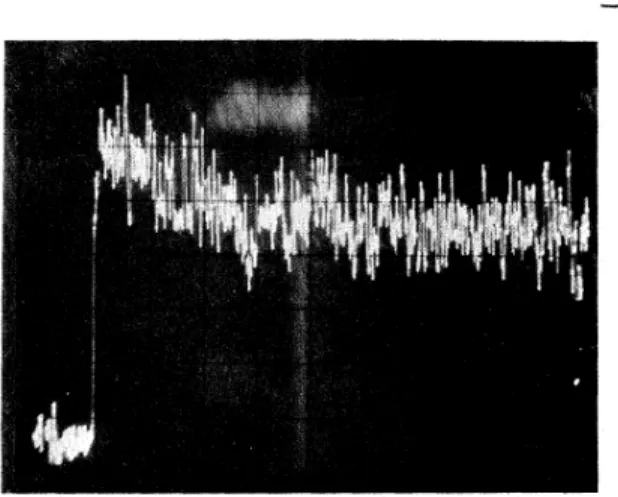Publisher’s version / Version de l'éditeur:
Physical Review B, 11, 11, pp. 4512-4517, 1975-06
READ THESE TERMS AND CONDITIONS CAREFULLY BEFORE USING THIS WEBSITE.
https://nrc-publications.canada.ca/eng/copyright
Vous avez des questions? Nous pouvons vous aider. Pour communiquer directement avec un auteur, consultez la première page de la revue dans laquelle son article a été publié afin de trouver ses coordonnées. Si vous n’arrivez pas à les repérer, communiquez avec nous à PublicationsArchive-ArchivesPublications@nrc-cnrc.gc.ca.
Questions? Contact the NRC Publications Archive team at
PublicationsArchive-ArchivesPublications@nrc-cnrc.gc.ca. If you wish to email the authors directly, please see the first page of the publication for their contact information.
NRC Publications Archive
Archives des publications du CNRC
This publication could be one of several versions: author’s original, accepted manuscript or the publisher’s version. / La version de cette publication peut être l’une des suivantes : la version prépublication de l’auteur, la version acceptée du manuscrit ou la version de l’éditeur.
For the publisher’s version, please access the DOI link below./ Pour consulter la version de l’éditeur, utilisez le lien DOI ci-dessous.
https://doi.org/10.1103/PhysRevB.11.4512
Access and use of this website and the material on it are subject to the Terms and Conditions set forth at
Observation of hole burning and cross relaxation effects in ruby
Szabo, A.
https://publications-cnrc.canada.ca/fra/droits
L’accès à ce site Web et l’utilisation de son contenu sont assujettis aux conditions présentées dans le site
LISEZ CES CONDITIONS ATTENTIVEMENT AVANT D’UTILISER CE SITE WEB.
NRC Publications Record / Notice d'Archives des publications de CNRC:
https://nrc-publications.canada.ca/eng/view/object/?id=b39fa4be-fc4f-48c5-b2c0-5a1aac8967be
https://publications-cnrc.canada.ca/fra/voir/objet/?id=b39fa4be-fc4f-48c5-b2c0-5a1aac8967be
Observation
of
hole
burningand
cross
relaxation
effects in
ruby A. SzaboRadio and Electrical Engineering Division, National Research Council ofCanada, Ottawa, Ontario KlA OR8 (Received l July 1974)
In this paper we report, for the first time, the observation ofoptical hole burning in a sohd, ruby. In addition, we describe experimental results which show that optical saturation ofthe inhomogeneously broadened
R,
line in ruby at 4.2'K occurs not only for ions in resonance with the saturating radiation but also for ions at frequencies up to about 50 MHz away from the radiation frequency. This result and others are consistent with a model in which cross relaxation occurs in the ground-state levels between ions in resonance with the laser beam and nonresonant ions.INTRODUCTION
In the past eight years, several new
laser
tech-niques have been developed which allow
spectros-copy whose resolution
is
limited only by the homo-geneous linewidthfor
gaseous and solid-statein-homogeneously broadened
spectra.
The techniquesparallel conventional types of spectroscopy inthat line-narrowing phenomena al"e observed both 1n absorption and fluorescence. Absorption hole
burning was
first
observed ingases'
using the Lamb-dip effect andis
presently giving unparalleledresolution in gaseous spectroscopy.
'
Fluorescenceline narrowing {FLN)in gases was
firsts
observed via excited-state-coupled transitions in Ne andlater
in I2following excitation from the groundstate.
FLN has also been extended tosolids.
'
In this paper we wouM like to report on
a
newtech-nique of hole-burning spectroscopy and the
applica-tion of this technique in the
first direct
observation of optical hole burning in a solid (ruby). While such an observation in rubyis
not unexpected inview ofthe FLN experiments,
'
new effects appearwhich
are
shown to be associated with ground-statecross
relaxation.The radiation source used in the experiments was
a
tunable single-frequency cw rubylaser.
'6By varying the temperature of the
laser
ruby, thelaser
frequency could be tuned continuously overa
range of several6Hz.
The tuning capabilityis
illustrated in Fig,
1,
which shows the rubyabsorp-tion spectrum in the vicinity ofthe
E-4Aa(a
—,')
line[8(+
—,')].
The well-known isotope structureis
shown with much higher resolution than previous work~ and
a precise
demonstration ofthe Gaussian line shapeis
given. In the hole-burningexperi-ments, the
laser
frequency was adjusted tothe peak(+
50 MHz) of theR(+
—,')
line.Since the Lamb-dip effect used
for
hole-burningspectroscopy in gases
is,
ofcourse, not applica-ble to asolid, another approachis
required.For
an inhomogeneously broadened line in
a
solid, twolaser
sourcesare
requiredfor
hole-burningspec-troscopy: afixed saturating beam to produce the hole and
a
tunable low-power beam to probe the absorption in the vicinity ofthe hole. A simpleway to produce such beams
is
to weakly amplitude modulate a single-frequencylaser.
The sidebands then serve as the probe while thecarrier
serves
as the saturating beam. Measurement ofthe sideband beam transmission through the sample
'as afunction ofmodulation frequency gives the hole shape produced by the saturating
carrier.
The experimental arrangement
is
shown inFig.
2.
Thelaser
beamfirst passes
througha
CoherentAssociates model 3025
electro-optic
modulatorwhich has abandwidth of 25 MHz. The modulation
amplitude
is
adjusted so that the sideband poweris
sufficiently low soas
to be nonsaturating. The beamis
then focused bya 10-cm
lens into the rubysample which
is
cooled to-5
K.
The transmittedbeam
is
detected by an RCA 31000Aphotomulti-plier; the output ofwhich
is
processed by aHewlettPackard model
85538,
85528,141T
spectrumanalyzer. The sideband intensity i.
s
obtained bysuperheterodyne detection with the transmitted
carrier
beam servingas
the localoscillator.
Thesystem
is
calibrated versus modulation frequencyby removing the ruby sample and adjusting the
photomultiplier-local-oscillator current (by
at-tenuating the beam) to be the same as with the sample in position.
RESULTSAND DISCUSSION Hole burning
The experimental dependence of the transmi. tted sideband intensity on modulation frequency
is
shown in
Fig.
3.
Two main features ofthesere-sults
are
(i) the hole widthfor
zero magnetic fieldis
much larger than when thereis
an applied field(narrow central line) and (ii) for the applied field
case,
thereare
two holes of half-widths-5
and50 MHz.
The observed narrowing ofthe homogeneous
OBSERVATION OF
HOLE BURNING
ANDCROSS-.
.
.
4513 IOO— 80— 60— c5 l2 (3) X 40— 20— x EXP'T ~GAUSSIAN RESOLUTION z 0 V) VI X V) zIOP
X 0 x lo—e
R I-X ~= FWHM =1.82 GHz CI5o+Crs' CI R 6 fO UJ O CO UJ 4 I-UJ K (EI,X 8=0 o,~ B=400G go O~ Oy ~ ~l
/~
X I -"-0 I X 3 4 5 6 7 8 FREQUENCY (GHz) I IO I 20 30FfG.
].
Absorption spectrum near the R&(+$)line of0.03% ruby at4.2'Kusing atunable single-frequency
ruby laser.
SIDEBAND FREQUENCY (MH2)
FIG.
3.
Dependence of sideband-transmitted intensityonfrequency shift from the saturating carrier.
echo
'
and fluorescence-line-narrowingresults.
Magnetic-field-dependence studies
"
ofphotonechoes indicate an echo lifetime lengthening of over an order ofmagnitude when the magnetic
field
is
turned on, whichis
consistent witha
re-duction of the homogeneous linewidth. In FLNstudies alinewidth of 120MHz has been observed for a
0.
01%ruby in zero field and aninstrument-limited width of 9MHz
for
an applied field."
The reduction of the homogeneous linewidth with mag-netic field may be understood in terms ofa simpleclassical
picture. Atzero
applied field, aniso-tropic fluctuating magnetic field
exists at
theCr
sites
due to the Al nuclear spins. This magneticfield produces
a
modulated splitting of the energylevels giving
rise
to alinewidth. Whena
mag-netic field, large compared with the Al field,is
applied along the g axis, the total field remainsmainly oriented along the
c
axis with a smallMAGNET //// MOOULATOR UBY
vuuu
SPECTPUM ANALYZE RFIG. 2. Schematic of apparatus used for sideband
de-tection ofhole burning.
modulation of
its
amplitude present owing to the Al spins. Since the Zeeman splitting ofthe 8&(+
a) lineis
least when the fieldis
along thec
axis,a
reduction in linewidthoccurs.
The observed linewidth of5 MHz
for
an applied magnetic fieldis
mainly determined by thelaser
linewidth, the latter being determined by pump-power fluctuations and vibrations. The homo-geneous linewidth
is
expected to be determined byAl—
Cr
superhyperfine interactions.'
Calculations based onrecent'
measurements of thesuperhyper-fine interaction constants in the excited
X
states
give a linewidth
for
R(+
—,')
transitions of0.
54MHz. Another calculation based on fluorescence-decay considerations has predicted'~ linewidths in the range0.
V-O.9MHz.Cross relaxation
Of particular
interest
is
thefact
that two holesappear
for
an applied magnetic field. Atfirst
sight,this result seems to suggest that optical
cross
relaxation leading to
spectral
diffusionoccurs.
However, we argue that optical
cross
relaxationis
not the mechanismfor spectral
diffusion butinstead
it is
cross
relaxation inthe ground-statelevels.
A simple anddirect
proof that opticalcross
relaxation does notoccur
is
that in FLNex-periments, there
is
no evidence ofabroadfluores-cence line sitting under
a
narrow one.Further evidence favoring ground-state
cross
80— 40— 20— O lO-Z Q UJ
6-—X~
X l Expt. Theory: nocross relaxationTheory:fastcross
relaxat ion I -7 LOG POWER X X I
FIG.4. Optical saturation behavior of0.03% ruby at
4. 2'Kusing a10-cmfocusing lens. On the horizontal
axis, zero corresponds to 1mW oflaser power. The
laser istuned tothe center of the R&(+~2) line and 400-G
field is applied along the caxis. The arrow shows power
atwhich Fig. 3was obtained.
saturation behavior of ruby. We have compared experimental results with calculations described
in the Appendix. The saturation
is
observed to agree well with the theory in whichfast cross
re-laxation
is
assumed. The only adjustableparam-eter
inEq.
(A4)is
o„,
the effective homogeneouscross
section which, in the present experiment,is
determined by thelaser
linewidth. The pump photon densityis
determined by the input-beamdia.meter of 2 mm and the
10-cm
focusinglens.
Direct
Fabry-Perot
and superheterodynemeasure-ments using two separate
lasers
place an upperlimit of 5 MHz on the la,
ser
linewidth. To shiftthe
no-cross-relaxation
curve onto theexperi-mental results would require
a laser
linewidth of about 100MHE whichis
far
from the actual value.Hence we conclude that
fast cross
relaxationis
present.
A rate-equation analysis of
cross
relaxation will now be presented. We divide the ions into threeclasses,
the Rions resonant with thelaser,
the NR ions whichare
near resonance, and the OR ions whichare far
offresonance. The analysisand qualitative study of
Fig.
5 show howcross
re-laxation to NR ions can lead to a reduction ofopti-cal
absorption and hence the production ofa
hole=—P(n, —n,) +yn, —((u/N)(n, N, —n,N,
),
(I)
where
P=5 sec
'
is
the spin-lattice relaxationrate
at 4
'K,
y=250sec
'
is
theE-level
relaxation rate,and
=10
sec
'
is
thecross-relaxation
rate
forpink ruby.
'
The density ofNR ionsis
denoted by N and similarly n for R ions. Therate
equationfor
NR ions in level 2is
=—p(N2 —Ni) —(&/N)(niN2 —n~Ni). (2)
RESONANT NEAR RESONANT OFF RESONANT IL SATURATE OECREASED ABSORPTION CROSS RELAXATION
FIG. 5. Energy-level scheme for cross-relaxation
model.
by NR ions. The experimental results of
Fig.
3 suggest that only Rand NR ionsare
involved in thecross
relaxation. If all ions were involved in thecross
relaxation,it
is
easy to show that verylittle redistribution of ground-state population of the unpumped ions would occur essentially because
the number ofunpumped ions
is
so much greaterthan the pumped ones (by a factor
-400).
In orderto get an appreciable redistribution ofpopulation
of the unpumped ions due to
cross
relaxation fromthe pumped ones,
it is
necessary torestrict
the number of theformer.
It
is
interesting to note that sincecross
relaxationoccurs
preferentiallyamongst ions which
are closest,
the experimentsuggests that the frequency of the ions changes gradually from site to site rather than suddenly,
in other words the strain responsible
for
thein-homogeneous broadening
is
of macroscopic sizecompared with the ion spacing.
To make the problem tractable we simplify the
six-level ruby system (two optical, four
micro-wave in amagnetic field) tothree levels.
For
theenergy-level scheme shown in
Fig.
5, levels 1and 2
are
ground-state levels with a microwave-frequency separation while 3is
an optical level.The optical transitions 1
-
3, 2-
3are
inhomo-geneously broadened. A saturating single-frequencylaser
beam interacts with transition2-3.
We will assume ground-statecross
relaxation can occur only between Rand NR ions.The rate equation for R ions in level 1may be
OBSERVATION OF
HOLE BURNING
ANDCROSS-.
. .
4515 D 03 LU CI MNR ions in the broad hole
is
given byA~=g'&"2', where o~is
across
section determined by a,N =o,N~, where Nis
the population density ofNRions, cr&
is
the inhomogeneouscross
section, andN~
is
the total density ofCr
ions. Hence weob-tain N~/N=lnA.
,
/o, Nrl.
The measurement inFig.
1gives o,
.
=2.
56xl0"
cm' giving N,/N=0.
16for
l=2 mm and a
Cr
density Nr——0.
96x
10~9/cm3.From Eq. (5)we obtain x=50n/N =
5.
0andthere-fore
n/N=~.
Taking a5 MHE widthfor
n(deter-mined by the
laser
linewidth) gives awidth of 50MHz for N in good agreement with the experimental broad-hole width. Thus we have shown that the
observed attenuation in the broad hole
is
consistentwith the hole width using amodel inwhich
cross
relaxation
is
restricted
between resonant andnear-resonant
ions.
Further evidence for cross relaxation
SIDEBAND FREQUENCY
FIG. 6. Absorption hole shape as seen by the probe
sideband beam in the vicinity ofthe saturating line.
A„
is the probe attenuation at the saturating line position
and A&is the probe attenuation extrapolated to the center
ofthe broad hole.
Solving (1)and (2)under steady-state conditions a.nd with strong pumping
(i.
e.
, nz —-n~), we obtain an equationfor
N~:2IdpN, +
[
Idp(N+2n)+6 p'N+ y (IIIn+ 2pN)]N,—pN[Id(N+n)+ (3p+y)N]
=0.
For
n/N«1
and»&
p,y we may approximate Eq.(2) as
Here we present further evidence that
cross
relaxation
occurs
in the ground-statelevels.
The evidence involves time-dependent absorption andfluorescence
processes.
InFig.
7we show the time dependence of the transmissionafter
suddenlyturning the saturating light on and in
Fig.
8 the absorption recoveryafter
suddenly reducing the light froma
high saturating level toa
lowmonitor-ing level. While not of
direct
interest here,Fig.
7 shows rather nicely the
effect
of amagnetic fieldon the saturation behavior via
its
effect on the homogeneous linewidth[Eil.
(A4) in the Appendix].Much
less
saturationis
observedfor
zero field be-,cause of the
larger
homogeneous linewidth in zero field. The absorption recovery inFig.
8is
seen2PN2~+ (NP+yn)N, —PN2
=0,
which has
for
its
solutionN,/N=
,
'[
(1+x)+(-9+-2x+x')"'],
(4)
(5) where x= yn/pN =
50n/¹
We note that Id drops out of the above equation, essentially becauseit
is
muchlarger
than the other relaxationrates.
Physically this means that the ground-state spintemperature of the NR ions
is
locked tothat of theR ions. Measurement ofN2/N then allows
calcu-lation of the ratio n/N and hence the holewidth of
N corresponding to the NR ions.
From
Fig.
4, we obtainfor
the differentialat-tenuation
A„at
the operating point indicatedA„
=1.3.
Thisis
the attenuation seen by the sidebandprobe at the peak ofthe narrow line in
Fig.
3.
The sideband attenuation A.~produced by the broad lineextrapolated tothe center of the broad line
is,
fromFig.
3, about afactor
of2.
5 largeror
A~=3.
2.
The various attenuationsare
shown inFig.
6.
Re-ferring to
Fig.
5, the population N, in level 2 ofFIG. 7. Time dependence of transmission
(transmis-sion increasing upwards) forR(+~&)line when the
satu-rating radiation is suddenly turned on. A magnetic field of
-400
Gis applied parallel tothe caxis for the large-amplitude trace. The field is zero for theby
a
smaller-amplitude0.
2sec
rate, whichcor-responds to the ground-state relaxation time. If there were no
cross
relaxation we would haveex-pected to
see
a recovery mainly at a0.
2sec
rate because of optical-pumping effects in the groundstate.
InFig.
9we show the time dependence of the fluorescence followinga
sudden application ofa
saturating pulse. The fluorescence of the8,
(+~)
transition was observed using aFabry-Perot
interf erometer, which alloweddiscrimina-tion against scattered
laser
light which excited theR&(+ —',) transition. If there were no
cross
relaxa-tion we would expect
a
sudden increase in fluores-cence corresponding toa
suddenincrease
of popula-tion of ~N~ inE
followed bya
drop to a level cor-responding to apopulation-
(P/yl'Nr=~r
inE,
thelatter drop occurringbecause of opticalgumping in the ground
state.
Experimentallyless
than afac-tor
of 2drop in fluorescenceis
observed, muchless
than the factor+0 expected from the above argument. Thefact
that some dropoccurs
indi-cates
somerestriction
in the population betweenwhich
cross
relaxationoccurs
whichis
consistentwith
earlier
conclusions. Iffast
cross
relaxation occurred to the entire population aslightrise
rather than
a
drop in fluorescence would beex-pected as the excited-state population
increases
from
its
turn-onvalue —',N~to 3N~, the value reached w'hen the ground-state populationsare
constrained tobe equal because ofcross
relaxation.CONCLUSION
The main conclusions of this study
are:
(i)Optical hole burning has been observed
for
thefirst
time ina
solid.(ii)A decrease in hole width corresponding to a
FIG.
9.
Time dependence ofR&(+&)fluorescence onsuddenly turning onlaser toexcite R&(+~&)line. Time
scale 0.1sec/cm. Zero applied field.
decrease
in the homogeneous linewidthoccurs
when amagnetic field
is
applied to the rubysam-ple.
Thisis
in agreement withfluorescence-line-narrowing' and photon-echo
results.
(iii) Inamagnetic field the narrow hole
is
super-imposed on
a
much broader hole. The broad holearises
fromcross
relaxation in the ground-statelevels between optically resonant ions and
near-resonant ions.
(iv) The strain causing inhomogeneous
broaden-ing of the R zero-phonon line in ruby varies slowly
spatially compared with the ion spacing.
(v) Higher-resolution spectroscopy
is
expectedfor
hole burning as compared with fluorescenceline narrowing since an interferometer with
its
limited resolution
is
not required. The resolutionis
determined only by thelaser
stability.ACKNOWLEDGMENTS
Discussions with
Dr.
I.
E.
Erickson and thetechnical assistance of
E.
L.
Dimockare
grate-f
ully acknowledged.APPENDIX: OPTICAL TRANSMISSION UNDER SATURATION CONDITIONS
We consider transmission under saturation
con-ditions
for
the three-level system shown inFig. 5.
The population and photon
rate
equationsare,
ig-noring
cross
relaxation,A/i
=P(n, —n,
)+
yn,,
(Al)dR3
=o&P(n~-nq)+
yn~-P(nm-ni),
(A2)FIG. 8. Recovery of absorption following saturation. The bottom trace shows the final recovered value. Time
scale 2 msec/cm. 400-6field applied along caxis.
(A3)
dP
=o~P(n~- n~),
OBSERVA
TION
OF HOI.
EBURXrNG
aXD
CROSS-.
. .
homogeneous linevridth and
P
is
the photon flux. The solution ofEgs.
(Al)-(AS)
under steady-stateconditions
ls
~ ~ ~
SP+&
4P&
o„(P-
S',)+
lnP/P,
=-ao, v,
f (A4)j.
&&here o~
is
the inhomogeneouscross
section, N&is
the total population, Pois
the incident photon flux,and E
is
the sample length.Inthe
case
offast
cross
relaxation toa
reser-(S/4y)og(P Po—
)+
lnP/Po =—
~o)Npf.
(A5)This agrees with intuitive arguments in which we
let
an effective P become very large since thereal
one
is
short circuited byfast
cross
xelaxation.voir ofatoms much
larger
in number than thereso-nant atoms,
it
may be shown by considering cross-relaxation terms inEgs.
(Al) and (A2) thatEg.
(A4) becomes approximately,
P.
H. Leeand M.L.
Skolnick, Appl, Phys. Lett. 10,303(1e6v).
J,
L. Hall and C. Horde, Phys. Rev. Litt, 30, 1101 {1ev3).%.
G. Schweitzer,Jr,
, M, M, Birky, andJ.
A. White,J,
Opt. Soc. Amer. 57, 1226(1967).A. Szabo and
L. E.
Erickson, Opt. Commun. 5, 287O.ev2).
A. Szabo, Phys. Rev. Lett. 25, 924 (1970); 27, 323
(1ev1).
A. Szabo,
J.
Appl. Phys. (tobe publiShed.G.
F.
Imbusch, W. M. Yen, A,L.
Schawlow, G.E.
Dev-lin, andJ.
P.
Remeika, Phys. Rev. 136,A481 (1964).N. A. Kurnit and S,R. Hartmann, Intemctioe 0f
Redin-fion saith Solids (Plenum, New York, 1967),pp. 693-701,
P.
F.
Liao and S.R. Hartmann, Opt. Commun. 8, 310O.ev3).
A. Szabo (unpublished work). The instrument width is
determined by the Fabry-Perot width of5 MHz and the
laser linewidth of
2-5
MHz.P.
F.
Liao,P.
Hu,R.
Leigh, and S.R.
Hartmann,Phys. Rev. A9, 332(1974).
L.
Q. Lambert, Phys. Rev. B 7, 1834(1973).R.



